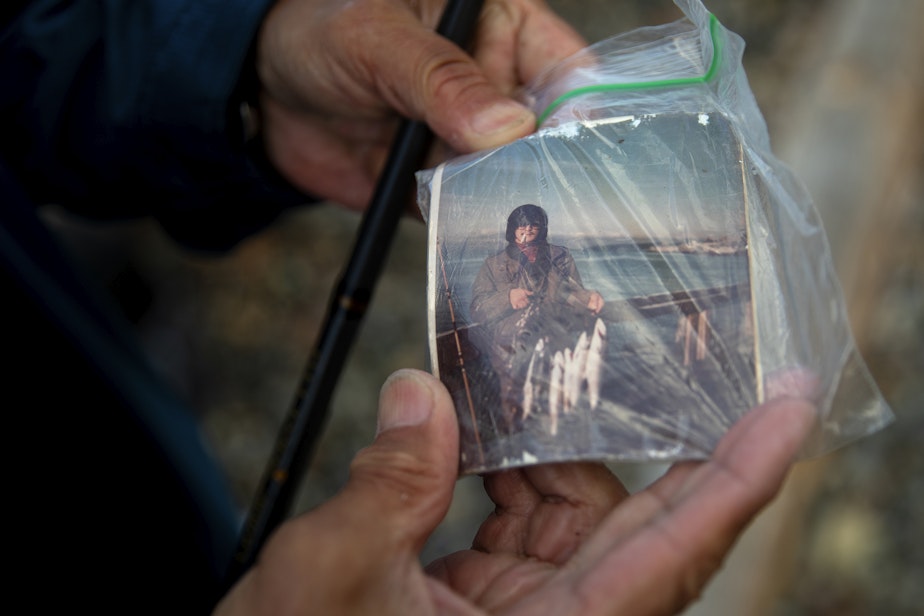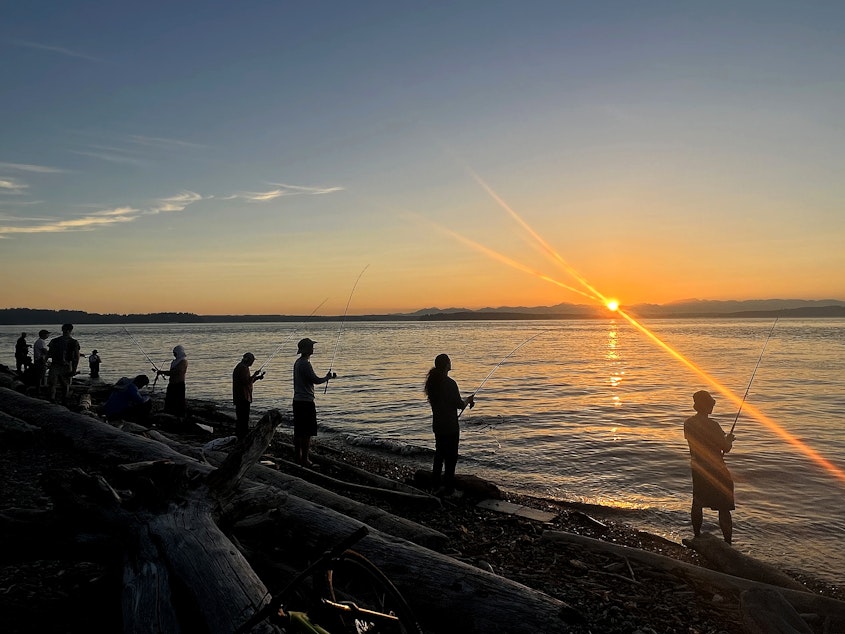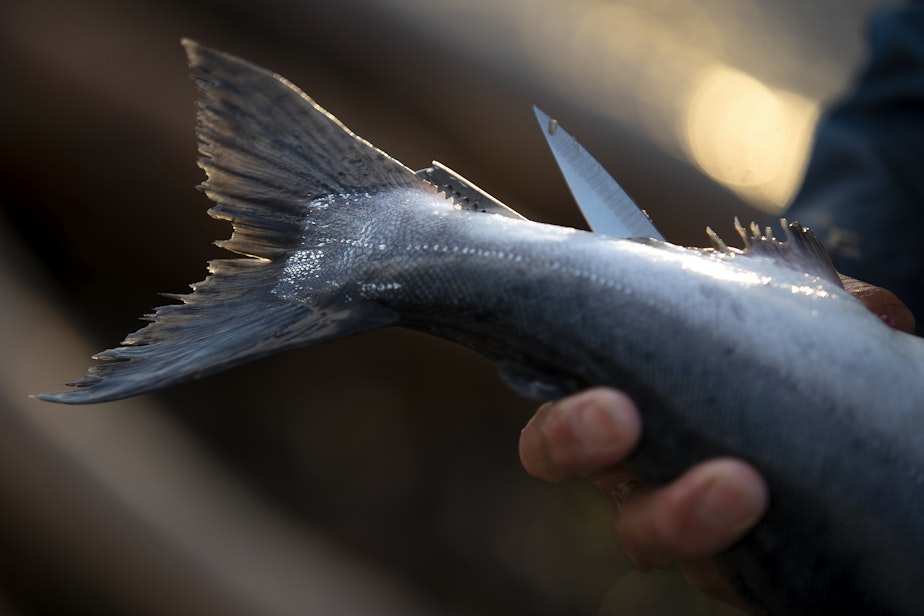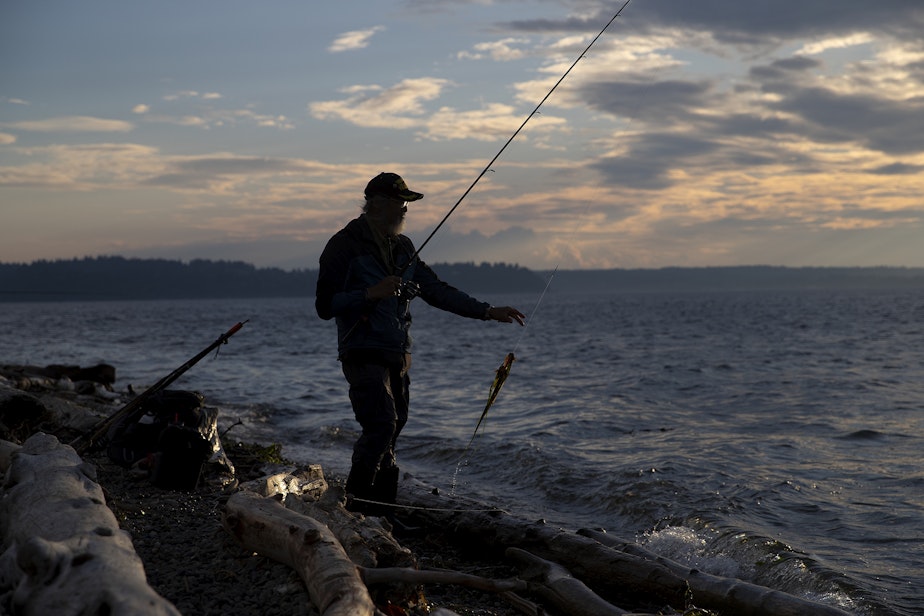Pink salmon are on the move and Seattle anglers are lining up to reel them in

A
s the sun set over Puget Sound, Tom Molinas stood in a line of a half-dozen anglers spaced evenly along the beach at Lincoln Park in Seattle, casting and reeling in, their poles rising and falling in an uneven rhythm, everyone waiting for a bite.
Molinas had already had some luck. Two pink salmon flapped sporadically on a line in the lapping tide by his feet.
Molinas has been fishing these waters for three decades. He pulled out a photo protected in a Ziploc bag that shows him standing at Pier 52 downtown in a rain jacket and sunglasses smoking a cigarette and holding a line of half a dozen salmon. He was 22.

Molinas, a veteran of the Vietnam War, said, over the years, fishing has played a big part in maintaining his mental health.
“For me, this is therapy,” he said.
RELATED: Pink salmon are having a great 2023 return in Puget Sound
This year’s run has the potential to calm many a soul. State officials say 2023 could be one of the largest runs of pink salmon in the past decade. Pink salmon only return to their spawning grounds on odd-numbered years.
They are sometimes called "humpies" because of the hump males develop as they make their way up rivers and streams to spawn.
"We're forecasting to see about four million Pink Salmon returning to Puget Sound this year. That's right around the 10-year average," said Matt Bogaard, a salmon expert with the Washington Department of Fish and Wildlife. "We did see a run size of a little over 8.5 million in 2013. And we've had several large run sizes since, but in the last two pink salmon cycles, we've seen declining run sizes. So, it's great to see a larger number coming back this year."

In 2021, about 3.7 million pink salmon returned to Puget Sound.
"Pink salmon tend to swim in high-density aggregations, sort of at the shoreline, so they are a bit easier for folks to observe,” Bogaard said. “They're typically chasing their preferred food source and honing in on their natal stream habitats."
In recent years, the Pacific Ocean experienced consecutive La Niña cycles, which created favorable conditions for the young salmon. That could be one reason that pink salmon numbers are so high for marine observers, recreational catches, and commercial observations this year.
Sponsored

"We've also seen an increase in abundance in some of our other stocks," Bogaard noted. "Baker [River] sockeye, for example, has had one of the highest run sizes on record. So, we're hoping that the pink, and other stocks, follow suit."
RELATED: This Seattle salmon has a huge bite out of his head. Will it reach its home stream?
Bogaard added that pink salmon are one of the more resilient species of salmon.

“Because of the shorter life cycle of pink salmon, I think they are a bit more resilient to some of the habitat changes that we see — especially compared to other species," he said. "They're also especially good at colonizing new habitats and coming into new areas.”





